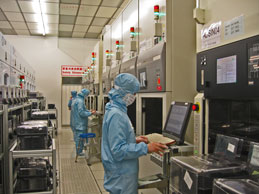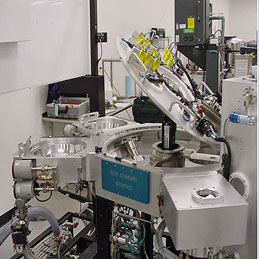Semiconductor Processing
The common belief is that if one simply measures the RF field levels around semiconductor processing equipment, and the levels are found to be below applicable standards, then all is well and the job is done. Unfortunately, that does not address the highest risk factors for RF safety issues.
A major study was conducted by three members of the Semiconductor Safety Association (SSA)—now the Semiconductor Safety and Health Association (SESHA)—and published in the SSA quarterly journal. The study concluded that the vast majority of documented RF exposure incidents occurred during and after maintenance activities. It is easy to understand why this happens if you understand how semiconductor processing equipment is designed and manufactured. The equipment is designed to be compliant by design and inherently free of RF leaks. There are numerous shields and interlocks to prevent exposure. However, during maintenance activities, the shields are often removed, and the interlocks are bypassed.
Exposure during Maintenance Activities
Many environmental health and safety professionals believe that the equipment, including its high-power RF sources, should be shut off during servicing. However, maintenance personnel know that it takes far longer to service the equipment and make adjustments if the equipment is turned on and off after each adjustment. It may take one or two hours to make adjustments this way instead of minutes. As they say, time is money and when the equipment is not producing semiconductors, it is not making money. With the shields removed and the interlocks bypassed, the inherent safety features are not in place.
Post-Maintenance Exposure
Post-maintenance exposure incidents are always a possibility because the equipment may not be properly reassembled. The personnel who maintain semiconductor processing equipment are highly skilled in many disciplines but, invariably, they are not RF experts. There have even been numerous reported incidents of viewing ports being added to equipment with inadequately grounded windows. The improper grounding of the windows have resulted in very serious RF leaks.
Leaks from New Equipment
It is not uncommon for new installations to have RF leaks due to damage during shipment and/or incorrect assembly.
Recommended RF Safety Procedures
The most basic recommendations are:
- Check new equipment installations before putting the system into use.
- Check equipment for leaks after it has been serviced if any of the work involved areas with high-power RF sources.
- Consider letting the maintenance personnel check for leaks and making leak checks part of the maintenance operation. Environmental health and safety professionals should audit the leak checks performed by the maintenance staff on a periodic basis.
- Maintenance personnel should wear RF personal monitors during maintenance activities if the equipment is active.
Contact RF Safety Solutions for advice on appropriate test equipment, RF personal monitors, and RF safety training.

